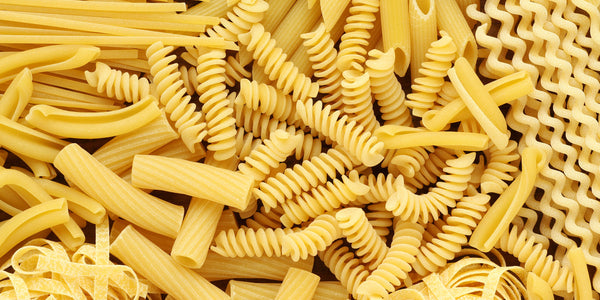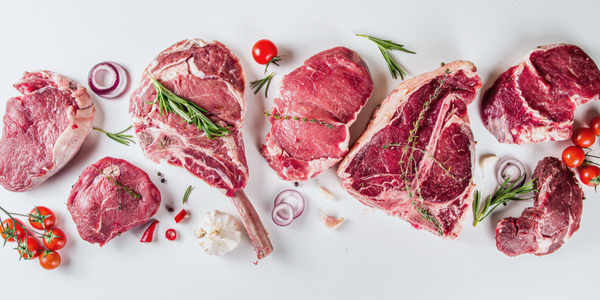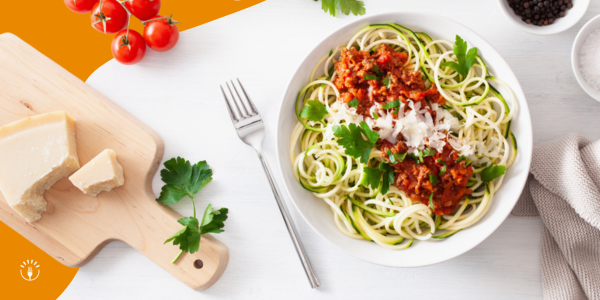
A Guide to Gluten Free Pasta
Gluten, which is a mixture of proteins found in wheat and related grains, has received a lot of press for about half a decade. Gluten-containing foods can be a part of a healthy balanced diet if you are not allergic or sensitive to gluten containing foods, which luckily are at times actually lower in calories and fat than their gluten free counterparts. Trying new and different foods can be an exciting and fun way to enjoy eating healthy, so we’ve created this ultimate guide to gluten free pasta.
How to Choose a Gluten Free Pasta
Picking the type of gluten free pasta you would like to try can depend on several different factors. Are you looking for a similar taste and texture of traditional wheat pastas? If so, consider a whole grain option such as a quinoa and corn blend. Quinoa, an ancient grain that is a good source of fiber and protein, has become quite popular recently and is often used in gluten-free cooking.
Another option is white or brown rice pasta, though this will have a noticeably different texture than traditional pasta, and likely less fiber, protein, and other nutrients (traditional pastas are usually enriched with extra nutrients, while rice pasta is not).
Pasta Alternatives
Another gluten free alternative to consider is pasta made from the starch of legumes, such as beans and lentils. These pastas, which are very different from traditional wheat varieties, have significantly higher amounts of fiber and protein, making them a great option for vegetarian meals. In addition to protein and fiber, beans are packed with calcium, phosphorus and iron. Lentils are good sources of folate, iron, potassium, phosphorus and magnesium. Consuming pastas made of legumes can actually play an important role in weight management by providing energy and a feeling of fullness that lasts. A diet rich in fiber can also reduce your risk of developing heart disease and works to reduce cholesterol levels in your bloodstream.
Serving Sizes
Based on our kitchen research, gluten free pasta made with beans and lentils is the most nutritious gluten free pasta available on the market. Varieties available include black bean, chickpea, soybean, mung bean, red lentil and adzuki bean. To limit gastrointestinal upset, consider consuming these pastas in moderation, and with plenty of water. A good serving size to aim for is 1 cup cooked gluten-free pasta.
How to Cook Gluten Free Pasta
There are several important factors to consider when cooking gluten free pasta. Follow all directions on the package closely, as some gluten free varieties may require more attention during the cooking process than traditional wheat pastas. You may find that gluten free pastas tend to stick together, so using a larger pot to give the pasta more space to cook and frequently stirring can help with this issue. Keep an eye on the pasta throughout the cooking process as it can become soft and mushy quickly.
For best results, cook the pasta al dente and keep the sauce separate until you are ready to serve your meal, since these pastas tend to absorb liquid from the sauces more than traditional varieties.
Keep it Light
Keep your pasta healthy by watching your portion size (serving size) as pasta is not a low calorie food (a good portion size is around one cup), and make sure to add plenty of non-starchy vegetables to your pasta dish. Choose sauces wisely- red sauces tend to have less calories and fat than white sauces. It’s a good idea to measure out your sauce, too to train your eye to a true serving. For an interesting change, consider making your own sauce at home. Try pureeing carrots and garlic into a tomato based sauce, add your favorite herbs, and limit the salt (or use a lite salt blend) for a delicious and healthy option.
Whether you are looking to have more options in a gluten free diet or simply want to try something new, gluten free pasta can be a healthy and delicious choice for anyone to try when cooking meals. Remember the basics: taste, texture, nutrition profile, portion sizes, cooking specifics and what other types of foods you will include in your meal. Gluten free pastas fit the bill for a unique and healthy eating experience, so you’ll never miss the real thing.







